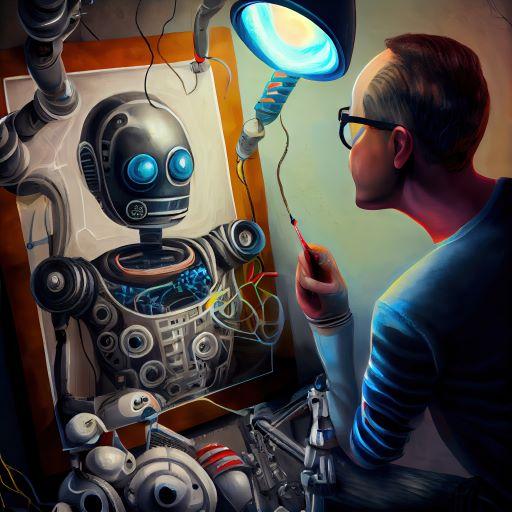
If you work in education, media, or the arts, ChatGPT and DALL-E 2 are likely to have superseded Covid-19 or even real estate prices as the conversation topic of the day. It is a revolution in the applications of artificial intelligence that has potentially severe ramifications for teachers and artists in particular, but their digital tendrils could reach much further – for better or worse. Before we print our ‘[Welcome/Buzz off] To Our New Digital Overlords’ banners to decorate the halls, it is important that we deconstruct what we are seeing beyond the marketing and hype so we can consider where these fit in the Scheme of Things.
Firstly, we need to understand what these things do. Each of these programs fundamentally consists of two core components: a database of the freely available content from the internet (and sundry other sources as part of the development process) and an algorithm that remixes the information of that database into content using your request. In this, the internet is analogous to a starry night sky while the algorithm is connecting those stars together to make a constellation that you requested. Crucially, the algorithm makes neither the starry sky nor the request. It is not a tool of creation in the classic sense; it is an evolution of remix culture rather than the fine arts.
This reduction shows that we need to be extremely careful with our next steps, because the freely available content of the internet is a particular kind of content. What the programs produce is remarkable because we are remarkable, the things we have produced are remarkable and beautiful and creepy and exotic. Often, what it produces is unreasonably similar to a specific artist’s or author’s work. It cannot provide ‘a way forward’, because it can only crystallise variously remixed versions of what we have already done (and often have not requested payment for). If a particular brushstroke is nice, then it can make for nice pictures in new ways, but no new brushstrokes are being created. The algorithm sees no picture or text at all, just arrangements of binary code tied together based on their sorting and patterns.
Consequently, the other end is potentially the more crucial segment, where the requests are made and translated. After all, a database of what was freely available on the internet already existed – it was called ‘the Internet’. Our words are not binary code for the machine to read, so the people that translate words into binary code are in a position to instil, intentionally or not, a particular sensibility in the way that translation happens, an inscription. Before that point, even our words can be a poor translation for our visions and desires, where a similar vision would translate, and be received, differently in English to how it would be seen in Korean. However, populations’ words do not carry equal weight, and the codes of request and translation will have higher fidelity to English visions than, for instance, Australia’s 217 other languages. That is what is being used to train the algorithm, offering an opportunity for yet another frontier for imperialism, as though there were some shortage.
These tools are amazing, objectively cool and wildly complex processes that tickle the imagination. It is for this reason, not despite it, that they require careful attention for how they can be widely seen. Yet their impacts, and the factors of their creation, remain poorly considered and obscured. It’s time to set the marketing aside and look at where this new tool is going to go.
This article featured in our first Centre for Media Transition news bulletion of 2023, read it in full here.

Tim koskie, CMT Researcher

